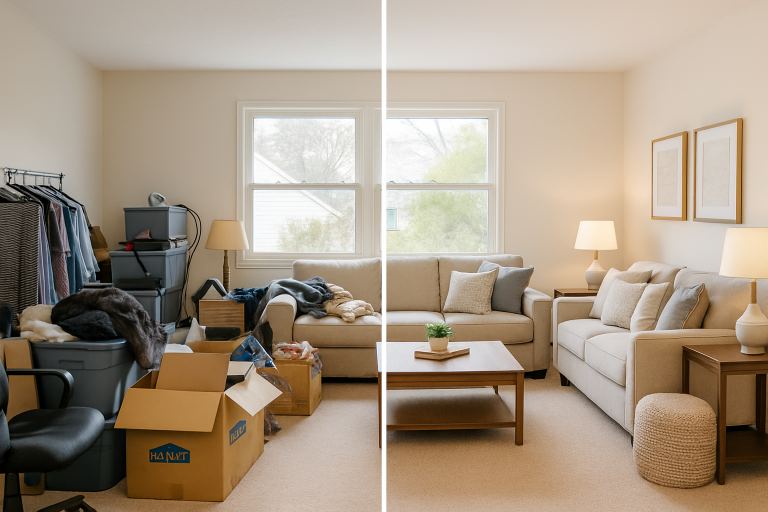Why Staging Matters More Than You Think
Proven Staging Tips To Sell Your Manufactured Home Fast begin with understanding the psychology of buyers. According to the National Association of Realtors (NAR), staged homes sell faster and often for higher prices because buyers can visualize themselves living in the space. Staging is not just about decorating—it’s a marketing tool that highlights your home’s best features while minimizing flaws.
In the manufactured home market, first impressions are very critical. Buyers may come with preconceived notions, so staging allows you to break stereotypes and present your home as a modern, desirable, and comfortable property. A well-staged manufactured home can rival site-built homes in buyer appeal.
The Power of Curb Appeal: Don’t Neglect the Outside
Your home’s exterior is the first thing potential buyers see. Simple steps like power washing siding, repainting trim, and adding fresh landscaping can dramatically increase interest. A manufactured home with clean siding, a well-maintained yard, and inviting entryways feels instantly more valuable.
Small details matter: replace worn steps, update outdoor lighting, and ensure the house number is clearly visible. These finishing touches send a strong message to buyers that your property has been cared for—an essential part of staging success.
Decluttering: Less Really Is More
One of the most effective staging tips to sell your manufactured home fast is decluttering. Buyers want to imagine their lives in the space, not feel overwhelmed by yours. Remove excess furniture, personal photos, and knickknacks. A minimalist approach opens rooms and makes them feel larger and brighter.
Consider renting a storage unit to keep seasonal items or large furniture pieces out of the way. Clean, open floor space highlights the home’s natural flow and emphasizes square footage, a major selling point for manufactured homes.
Neutral Colors: The Secret Weapon of Staging
Paint is one of the most cost-effective ways to transform your manufactured home. Neutral palettes such as soft grays, beiges, and whites create a clean, inviting environment. These tones appeal to a broader range of buyers and make your space feel fresh and move-in ready.
Accent walls can still be used sparingly to highlight architectural features, but avoid bold, polarizing colors. The goal is to create a blank canvas where buyers can mentally project their own style and belongings.
Furniture Placement: Showcase Space, Not Stuff
Arranging furniture strategically is vital in small or unique layouts often found in manufactured homes. Push furniture away from walls, create conversational groupings, and avoid blocking natural pathways. This gives buyers a sense of openness and function.
Keep in mind that less is more: one well-placed sofa and a couple of chairs can be more effective than filling every corner with furniture. You’re not just staging a room—you’re staging a lifestyle buyers want to embrace.
Lighting: Brighten Up Your Manufactured Home
Dark spaces feel smaller and less inviting. Open blinds, add sheer curtains, and use strategically placed mirrors to reflect natural light. Swap outdated fixtures with modern, energy-efficient options to make a big impact at a low cost.
Layered lighting—overhead, task, and accent—creates depth and warmth. Buyers often associate bright, airy homes with cleanliness and comfort, both of which help sell your home faster.
Kitchen and Bathroom: The Deal-Makers
Kitchens and bathrooms are the most scrutinized areas in any home sale. In manufactured homes, staging these spaces to look spotless and updated is crucial. Deep clean grout, polish fixtures, and consider inexpensive updates like new cabinet hardware or modern faucets.
Add small touches such as fresh towels, neutral shower curtains, or a bowl of fruit on the counter. These details suggest care and make buyers feel at home, often tipping the scales in your favor.
Don’t Forget the Details: Accessories That Sell
Accessories should enhance—not overwhelm—the home’s design. Use throw pillows, rugs, and artwork sparingly to add warmth and personality. Keep a consistent style throughout the home to ensure a cohesive flow from room to room.
Plants and greenery can also work wonders, bringing life and freshness to any space. Just be careful not to overdo it, as clutter works against staging efforts.
Professional Help: When to Call in the Experts
If staging feels overwhelming, consider hiring a professional stager. Many offer packages tailored to manufactured homes, ensuring your property looks its absolute best. A small upfront investment often leads to a faster sale and a higher selling price.
According to the U.S. Department of Housing and Urban Development (HUD), the manufactured housing sector continues to grow in popularity. Partnering with a professional ensures your home stands out in this competitive market.
Final Thoughts: Make Your Manufactured Home Irresistible
Staging your manufactured home isn’t about spending thousands on upgrades. It’s about presenting your property in the best possible light, highlighting its strengths, and minimizing its weaknesses. Every improvement—from curb appeal to lighting—adds value in the eyes of buyers.
By applying these proven staging tips, you’ll increase buyer interest, shorten time on the market, and maximize your selling price. Selling fast is not about luck—it’s about strategy, preparation, and execution.
